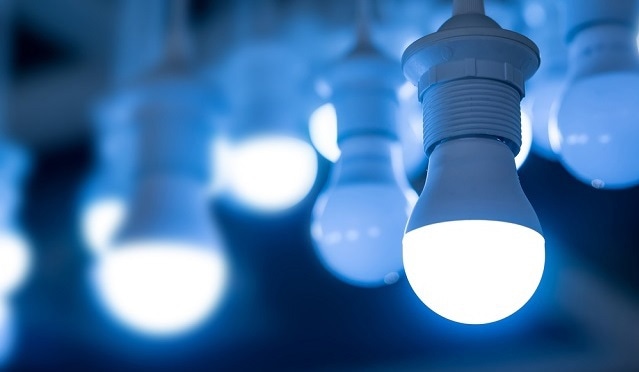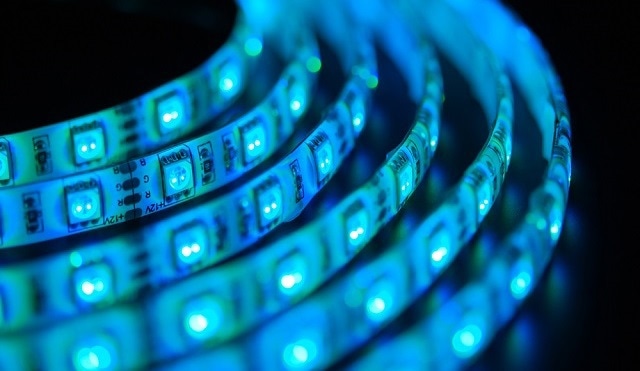Steven Goetstouwers is the CEO of Admesy, a company that specializes in the production of spectral measurement systems and colorimeters. AZoM spoke to Steven about the phenomenon of LED flicker, it's unpleasant side effects and the best method for determining its prevalence.
Please could you describe what flicker is, do all LEDs flicker?
Before getting into the technical details it is important to realize that flicker behavior isn’t inherent to LED light itself. On the contrary, when running the LED on a DC power supply, without controlling its light output, it would not generate any flicker and give a nice and stable light output.
However when building the LED light into a luminaire multiple levels of electronics are added, such as switching the AC power to a DC power and the use of Pulse Width Modulation to control the light output.
These electronics, that control the power supply of the LED light, can be “unstable” which results in a rapid and repetitive modulation of the light’s brightness. This modulation can be described using two variables: the amount in which the light’s brightness varies (expressed in a flicker percentage or via the flicker index) and the frequency in which it varies (expressed in Hz).

LED bulbs are quickly replacing conventional bulbs as their high efficiency makes them an affordable and environmentally friendly option. Image Credit: DK.samco/Shutterstock.com
What are the health implications of flicker?
When talking about flicker one has the tendency to imagine stroboscopic effects, similar to those caused by strobe lighting in clubs and disco’s, which involve the light switching on and off well within the visual range of perception (generally up to between 60 and 100 Hz). In reality the effect isn’t as dramatic and the noticeable effect is much more like the “buzzing” of a CFL light near the end of its life cycle.
One can easily imagine that an LED light flickering at a low frequency can cause an epileptic seizure or headaches. But often we overlook the impact of “non-visible” flicker at a higher frequency.
Since the neurons in our nervous systems still notice this flicker it is also capable of causing epileptic seizures, headaches, migraines and general malaise such as nausea, eye strain and decreased performance. It’s no wonder that the health effects of flicker are a cause of concern for many of us.
What is the significance of this for businesses?
As I discussed earlier the effects and impact for business owners can be very high.
On the one side we want to have users who all switch to energy saving lighting solutions, such as LEDs, but of course no one wants to work, or live, in an unhealthy or unpleasant environment. For business owners the costs of people being unproductive, or even receiving complaints, quickly add up.
On the other side we have producers of the light sources. For them a badly flickering light source could badly damage their brand image and in some instances there is even the risk of expensive juridical claims. But most of all no one wants to sell unhealthy products.

'non-visible' flicker can cause headaches and fatigue resulting in lower employee satifaction and reduced productivity. Image Credit: Andresr/Shutterstock.com
Is flicker avoidable? If so, how is it prevented?
Flicker is certainly avoidable up to a certain point. As a basic DC driven light source can get perfect flicker free light emission.
In the future houses and offices will be equipped with a DC power supply to run LED lighting. However, at the moment LED lighting solutions need to work with existing 110-220V AC power systems; which creates the need for extra steps to run the light source.
For more expensive (industrial) light sources flicker is generally controlled correctly since they can afford to use more space and more expensive components. For cheaper set ups it is always a balancing act between the price and the quality of the components.
However, the most important things are getting a good converter and getting a good sequenced timing for the PWM. This last one, I have to admit, can be very tricky when running multiple LED’s simultaneously in colour shifting light or LED panels.
How is the flicker measured?
To measure flicker you need a measurement tool which is capable of performing high speed measurement on the light output. Since flicker isn’t an absolute measurement but a relative measurement based on the light output you don't need a calibrated light meter, you can do a good flicker measurement on the luminance measurement (in counts) of the device.
For an accurate measurement and in order to detect flicker at higher frequencies it is important to get a device which is capable of measuring well over 120 Hz. At Admesy we have, for example, the Asteria light meter with a sample speed of up to 160.000 samples per second.
What standards are used to determine and categorise flicker? Is there an acceptable level of flicker?
In the market there are two well known standard ways of measuring flicker: the Flicker percentage and the Flicker index.
The most widely known and used standard is the flicker percentage; which is a 0-100% scale that describes the maximum and minimum value of one cycle of the light’s behaviour. In the literature it is sometimes also referred to as peak-to-peak contrast or Michelson contrast. The flicker index doesn’t only look at the maximum and minimum light output but also analyzes the actual waveform of the light source, comparing the area above the average light output to the area below the average light output.
However, the problem with these standards is that they don’t take into account the frequency at which the flicker occurs and they don’t give an “acceptable” versus “unacceptable” level.
Recently there have been very interesting publications on research showing which levels of flicker are safe and comfortable at different frequencies. This research has shown that a high flicker percentage can also be harmful at a high frequency of up to about 10.000 Hz. I would certainly advise developers and producers of LED lighting to check this new standard, known as the IEEE Standard P1789, as it really gives insight into what levels of flicker are safe and comfortable for the user.

Image Credit: Mifid/Shutterstock.com
Is there regulation on allowed levels of LED flicker? If not, do you expect regulation will be introduced in the future?
There are many regulations on LED lighting, most of them similar to the existing regulations of general lighting. There is a lack of regulation on the flicker of SSL, I believe the most important development in the future will be a standard similar to IEEE P1789, which I mentioned earlier.
This seems like a safe and fair way to test SSL since it protects the user but also gives a clear go/no go area of flicker to manufacturers so they can be sure of the products they are selling.
What do equipment does Admesy offer for the measurement of flicker?
Admesy has much experience with flicker in the display and SSL market and offers a range of products which can detect flicker. The most interesting of these products for the LED market are the Asteria light meter and the Cronus spectro-colorimeter.
The Asteria light meter is an affordable and robust light meter which is able to accurately measure the light output of the light source and characterise the flicker behaviour. With its sample speed of up to 160.000 per second it can easily measure up to 10Khz of flicker.
Additionally the Cronus series offers the comfort and measurement options of a spectrometer characterising light, CRI and more but thanks to the build in colorimeter it can also detect flicker behaviour up to a sample rate of 56.000 samples per second.
What is the advantage of the Cronus Bhaskar compared to other measurement systems?
The Cronus Bhaskar is a unique device in many ways. Firstly, it is a Cronus so it combines the advantages and accuracy of a spectrometer with the speed of a spectrometer.
This allows for very detailed and high-speed measurements of CRI, Spectral data, luminance, flicker behaviour etc. Secondly, the Cronus Bhaskar has a unique optical setup, with a measurement tube which provides a very practical and easy to integrate sphere like measurement system.
Due to it’s integrated software algorithms it can accurately mimic the measurements of a sphere system without the impracticalities.

The Cronus Bhaskar and the Asteria from Admesy can be used for rapid and accurate flicker measurements. Image Credit: Admesy
Where can our readers find out more about Admesy’s equipment and the Cronus Bhaskar?
On the Admesy site people can find all necessary info on the Cronus, Asteria and our other systems. Just click on the products section and choose your product.
I would also advise people to take a tour of the applications sections of our site. It offers a lot of information and application notes on the different measurement systems and setups and more in-depth information on technical subjects such as flicker.
About Steven Goetstouwers
 Steven Goetstouwers is CEO of Admesy BV; a Dutch manufacturer of colorimeters, spectrometers and spectral vision systems.
Steven Goetstouwers is CEO of Admesy BV; a Dutch manufacturer of colorimeters, spectrometers and spectral vision systems.
Before joining Admesy, late 2012, Steven worked at NV Industriebank LIOF a regional venture capital investor.
At LIOF he was responsible for investments in high-tech early stage start-up companies. During these 7 years he was involved in more than 50 start-up ideas and companies.
After graduation Steven started working at the University Maastricht Business School where he helped starting entrepreneurs developing a solid business plan.
Steven has a bachelor degree in Business Engineering from the Hasselt University and a master’s degree in International business from the Maastricht University.
Disclaimer: The views expressed here are those of the interviewee and do not necessarily represent the views of AZoM.com Limited (T/A) AZoNetwork, the owner and operator of this website. This disclaimer forms part of the Terms and Conditions of use of this website.